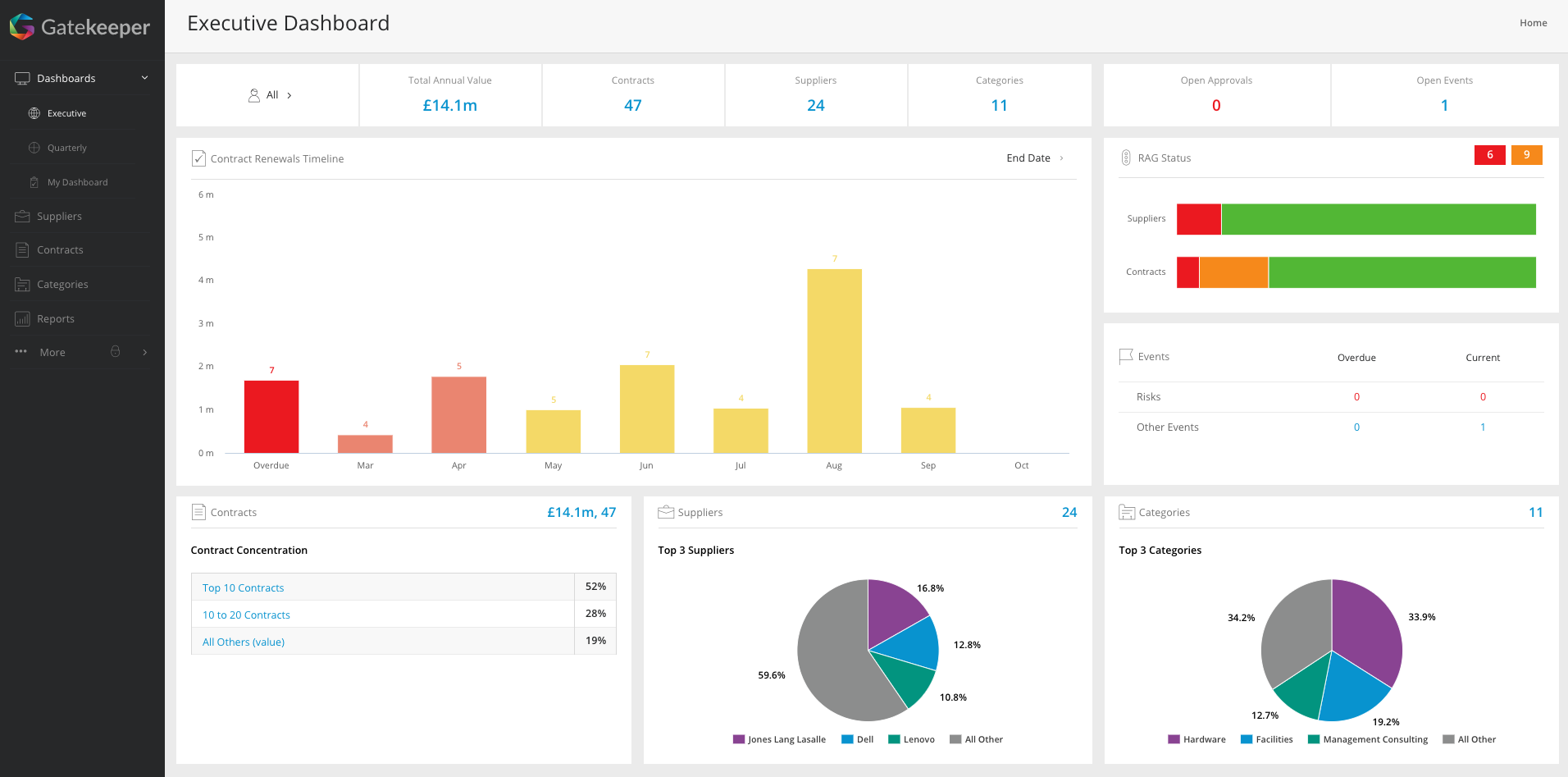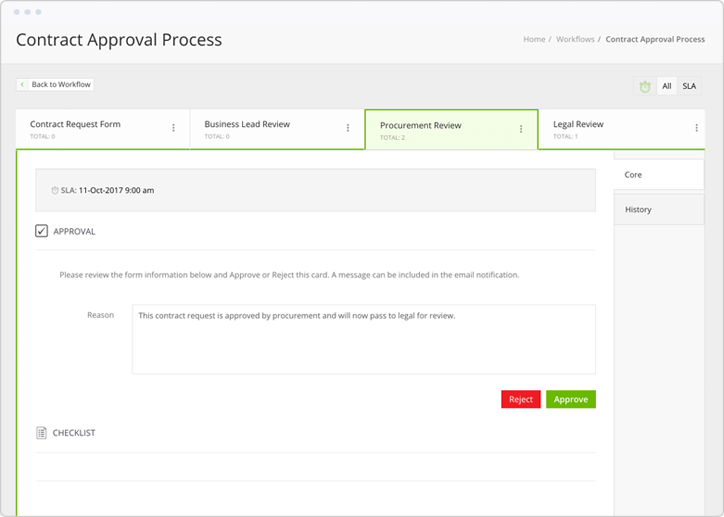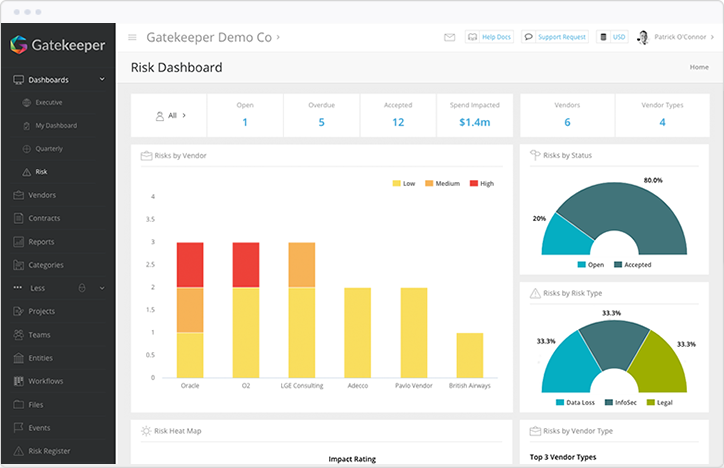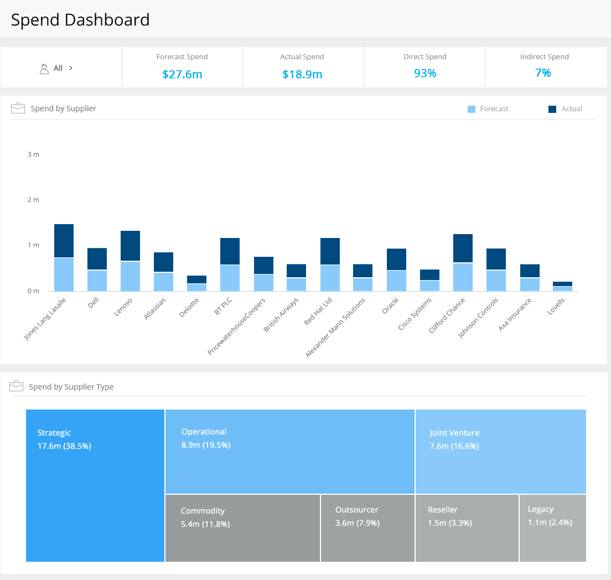All businesses enter into contractual relationships with suppliers to enable them to deliver goods or services to their customers. These contracts will range from the simple to the complex and create interdependencies that require careful management.
Given the ultimate responsibility to the customer, businesses need to ensure that contractual obligations are being met, services are being supplied to a high standard and that any suppliers are compliant with applicable regulations.
If these contracts aren’t governed appropriately, businesses can suffer from reputational, regulatory and financial damage whether that be through:
- Obligations not being met by either party which diminishes the value delivered over the lifetime of the contract
- Poor delivery of services, resulting in bad customer experiences
- Suppliers not abiding by local jurisdiction regulations such as data protection requirements.
Below, we take a look at what contract governance is, how you can improve your current approach and how you can maximise the value of your contracts.
What is contract governance?
Contract governance is the approach taken to ensure that the agreed outcomes between a business and suppliers are being fulfilled.
The objective of contract governance is to set goals, develop strong relationships with suppliers to ensure delivery, commit to compliance and deliver value to the business and its end-users.
There are a variety of activities that underpin an effective contract governance process including:
- Clear and frequent communication from the outset
- Risk mitigation throughout the lifecycle
- Regular performance reviews, and particularly as the agreement comes up for renewal or close-out.
Your approach to governance can be the difference between a contract failing or succeeding.
How can I improve contract governance?
There are six key ways to achieve better contract governance, which we discuss in-depth below:
- Create a single source of truth
- Define key contracts
- Track any decisions, approvals and changes automatically
- Assess and address any potential risks early on
- Set the KPIs you want to measure and track performance
- Ensure obligations are met and costs don't escalate
1. Create a single source of truth
Effective contract governance requires complete visibility of your contracts. If your business is keeping its contracts in disparate locations and formats, you won’t be able to work from a single source of truth.
This can lead to contract ambiguity, an inaccurate picture of performance and the risk of things like legal certificates expiring without anyone knowing.
Visibility doesn’t just mean knowing where your contracts are. It also means being able to see all the key dates such as when a service should be delivered by or when the contract comes up for renewal.
Tracking key dates will help you to govern contracts and expectations across the business more effectively.
For businesses using programmes such as Excel and Sharepoint, effective governance can be difficult to achieve – especially as the business scales.
Dedicated contract management tools should provide a clear contract repository where all contracts, metadata and associated files can be stored centrally.
Combined with auto-extraction capabilities, manual uploads of key contract data and human error can be eliminated, so you can trust the accuracy of your data and approach contract governance with confidence.
 See everything in one place with Gatekeeper's Executive Dashboard
See everything in one place with Gatekeeper's Executive Dashboard
2. Define key contracts that require contract governance
Once you have consolidated all of your contracts into a central repository, it’s important to choose the most important contracts to your business whether that’s in terms of value, complexity or how critical it is to your operations.
A contract’s importance to your organisation will determine the level of governance it requires and resources should be applied to where they matter most."
However, it’s still important to have effective management practices in place for all other contracts.
While key contracts are prioritised, the majority of contracts will only receive attention in the run-up to end-of-term, for the renewal or termination decision.
There could be an occasional spot-check on a contract if a red flag is raised by somebody or it gets selected for some type of random audit.
3. Track any decisions, approvals and changes automatically
If you’re spending too much time manually working through complex workflows and contract processes, looking for contract metadata or chasing approvals, little time can be spent on accurately monitoring, managing or tracking contract obligations.
This all contributes to ineffective contract governance efforts.
The attention applied to manual processes can easily distract your business from contract governance and the following issues can occur without your knowledge:
- Poor supplier performance
- Failed delivery of services and goods
- Delinquent spend and excess costs
- Lack of compliance with regulations
- Bottlenecks with suppliers
- Inaccurate reporting
By automating your internal processes with contract management software, you can visualise those processes and easily identify the issues outlined above.
Automated approval control and tracking means that escalations can be easily triggered when SLAs are at risk of not being met, alerting any suppliers to take corrective action.
This puts your business back in control so it can ensure contractual obligations are being fulfilled.
Automating and standardising your processes doesn’t just minimise inefficiencies and contract risk. It also allows you to create an auditable trail for every contract, providing a clear overview of when an escalation was raised, why it was raised, who is responsible for dealing with it and what actions have been taken.
These audit trails also capture all changes made to any contract, including re-negotiated terms, updated files and any communication between your business and its suppliers.
 Manage approval routines with Gatekeeper
Manage approval routines with Gatekeeper
All versions of the contract can be tracked and all comments are stored against contract documents and master records automatically.
With automation and standardisation, contract governance becomes a natural process embedded into your contract management approach.
4. Assess and address any potential risks early on
Whenever you agree to a contract with a new supplier, you introduce a further level of contract risk to your business. Successful relationships with your suppliers rely on collaboration, good communication and trust that they are being compliant.
It also relies on your business carrying out a number of risk-assessment measures as part of its contract governance process, both before the contract is agreed and while it’s active.
Activities included in this stage of contract governance include:
- Assessing the suitability of any supplier for your business requirements
- Collating and storing valid certificates from suppliers to prove compliance efforts
- Calculating Risk Scores for suppliers, based on probability and impact
- Regularly reporting on potential risks throughout your business
- Choosing which potential risks to prioritise for remedial action
- Planning for worst case scenarios in case of a contract breach
Creating a mitigation strategy and having a clear process in place for managing escalations are key factors in effective contract governance and supplier management.
Understanding the risk landscape your business faces and assigning ownership throughout your business will help you to ensure that risks can be mitigated.
Examples include setting a due date for compliance certificates coming up for their expiry date - by assigning ownership of the task and due date, you can ensure your business acts proactively, rather than reactively, to potential risks.
Accurately tracking supplier risks, types, categories and key dates isn’t feasible for growing businesses using manual processes. This approach can quite quickly cause inefficiencies and burdens on in-house teams, resulting in the tasks being forgotten or ignored.
 Track and assess vendor risk with Gatekeeper's Risk Module
Track and assess vendor risk with Gatekeeper's Risk Module
With dedicated contract management software, you can centralise, analyse, measure and manage the level of risk throughout your business.
5. Set the KPIs you want to measure and track performance
Contract governance ultimately helps your business to drive greater value from its contracts through obligation fulfilment, high level performance and guaranteed delivery.
That’s why it’s important to look beyond the terms of the contract and build some Key Performance Indicators (KPIs) against them. KPIs can include:
- Minimised changes to your preferred contract language
- Time taken to reach agreement, obtain approval and get signatures
- The level of timely service delivery
- Gaining best possible value from renewals
- Amount of issues raised and escalated
To measure the performance of a supplier against these KPIs your business must have full visibility of the data needed, and assign ownership for tracking performance against these measurements.
Businesses that fail to have the right contract governance process in place such as defining KPIs, reviewing supplier performance regularly and designing a plan to rectify poor performance will become vulnerable to contract and supplier risk.
As performance tracking should be ongoing, automation will play a helping hand in streamlining the process.
Automated surveys can help businesses gain visibility into vendor performance and visualise the data results for easy analysis. All historical data including reviews of quality, delivery and commercial value can be tracked and audited, helping you to govern contracts with accurate information.
6. Ensure obligations are met and costs don’t escalate
Businesses ultimately create a contract governance framework to help ensure that obligations are being met, even when priorities shift or someone leaves the business.
To achieve continuity and fulfilment, there must be a shared understanding across the business and with the supplier as to what the obligations are.
Obligations need to be met either within the terms of the contract or according to relevant regulation, so it’s critical that someone in your business takes ownership to prevent any creep. This could be instances of non-compliance, late delivery or poor supplier performance.
Contract risk and compliance are two areas we have discussed extensively throughout this article, but another area that your business should be mindful of is cost."
When taking on a supplier, you’ll want to see a return on your investment while also minimising any financial risk.
Clearly defined obligations should be set out by your company around budgeting and invoicing to support contract governance. Explicit terms can include:
- Sending invoices out on time
- Issuing invoices in a relevant period following delivery
- Paying invoices by due dates
- Paying late fees if invoices are paid after they’re due
Contract governance is required around vendor cost and spend to ensure that your business is still receiving a return on its investment.
Visualising spend data can add another level of maturity to your contract governance, especially when you can pull this information from ERP and finance systems within the business.
By aggregating this data within a dedicated solution, you can create detailed reports that provide insight into budget against expected costs, forecast against actual spend and identify any instances of duplicate or delinquent spend.
 Visualise data spend with Gatekeeper
Visualise data spend with Gatekeeper
Next Steps
To find out how Gatekeeper can help you to improve your contract governance, or if you have any questions, please contact us today.

.png)
.png)
.png)
-4.png)